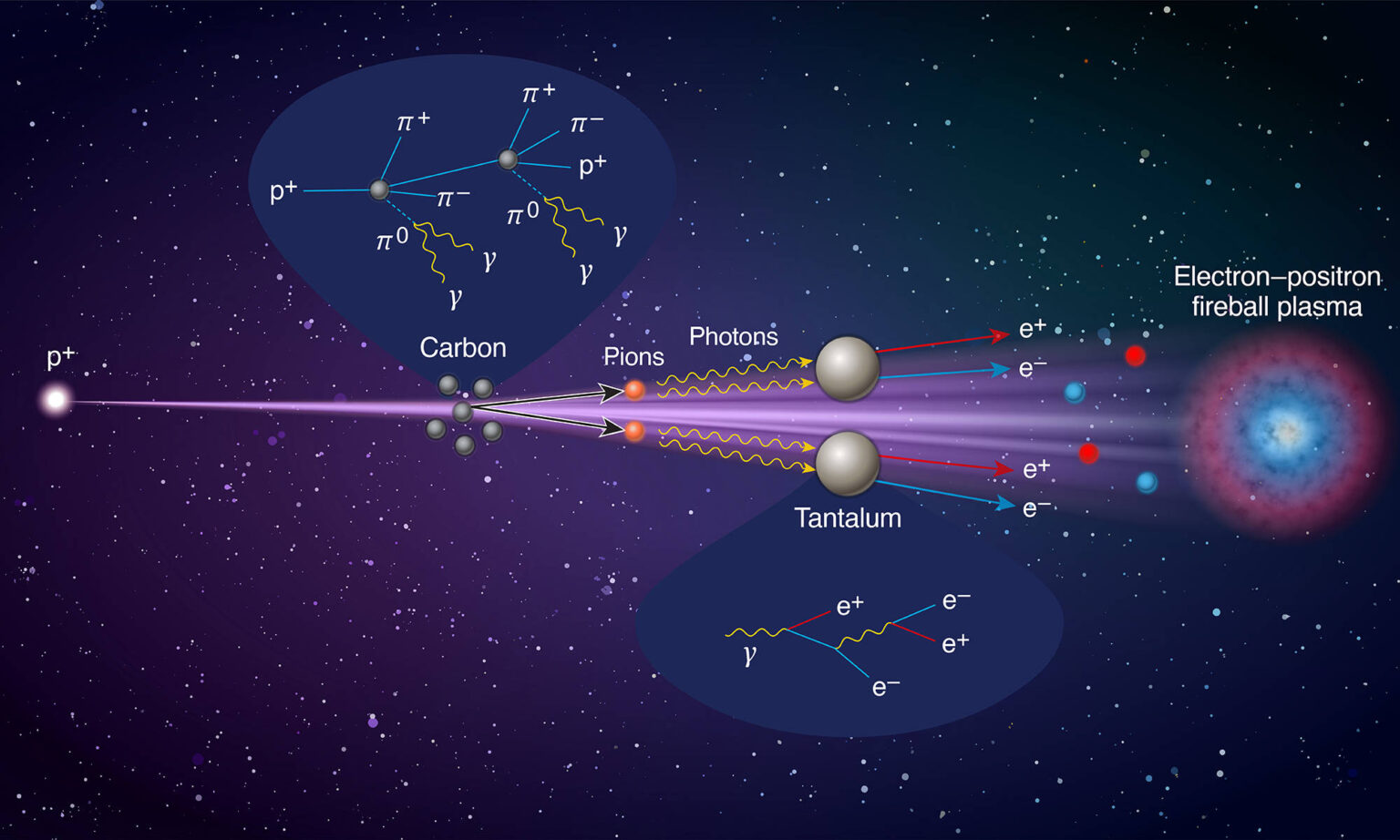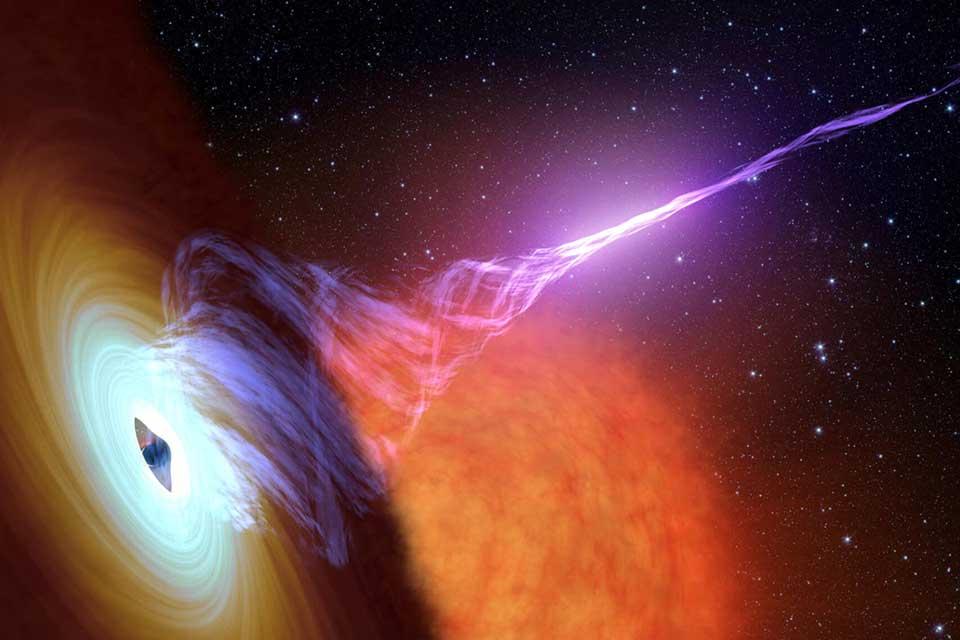An international team of scientists, led by the Department of Physics at the University of Oxford, has developed a novel way to experimentally produce plasma ‘fireballs’ on Earth, opening up a new frontier in laboratory astrophysics.
Black holes and neutron stars are the most compact objects in the universe. Around these extreme astrophysical environments exist plasmas, the fourth fundamental state of matter alongside solids, liquids, and gases. Because of the strong gravity exerted by these dense objects as they accrete nearby matter, they also eject powerful beams of relativistic plasma, mostly in the form of electron-positron pairs. While such jets are common in extreme astrophysical environments, creating them in a laboratory setting has proved challenging.
Now, for the first time, an international team of scientists has experimentally generated high-density, relativistic, electron-positron pair-plasma beams containing two to three orders of magnitude more pairs than previously reported. Their findings appear in Nature Communications. This breakthrough opens the door to follow-up experiments that could directly probe processes operating in gamma-ray bursts (GRB) or active galactic nuclei (AGN) outflows.
‘The laboratory generation of plasma “fireballs” composed of matter, antimatter, and photons is a research goal at the forefront of high-energy-density science,’ says lead author Charles Arrowsmith, from the Department of Physics at the University of Oxford. ‘But the experimental difficulty of producing electron-positron pairs in sufficiently high numbers has, to this point, limited our understanding to purely theoretical studies.’
Along with researchers from the Rutherford Appleton Laboratory, the group designed a novel experiment harnessing the HiRadMat facility at the Super Proton Synchrotron (SPS) accelerator at the European Organisation for Nuclear Research (CERN) in Geneva, Switzerland.
The experiment generated extremely high yields of quasi-neutral electron-positron pair beams using a whopping three hundred billion protons from the SPS accelerator. Each proton carries a kinetic energy that is 440 times larger than its rest mass. Because of such large momentum, when the proton smashes an atom, it has sufficient energy to release its internal constituents – quarks and gluons – which then immediately recombine to produce a shower of particles which ultimately decay into electrons and positrons (see figure). In other words, the beam generated at CERN had enough particles to start behaving like a true astrophysical plasma.
‘This opens up an entirely new frontier in laboratory astrophysics by making it possible to experimentally probe the microphysics of GRBs or AGN jets,’ adds Charles.
The team has also developed techniques to modify the emittance of pair beams, making it possible to perform controlled studies of plasma interactions in scaled analogues of astrophysical systems. This brings together researchers from across the Department of Physics, one of the largest in the world. Professor Gianluca Gregori and Dr Archie Bott from Atomic and Laser Physics, Professors Subir Sarkar and Alex Schekochihin from the Rudolf Peierls Centre for Theoretical Physics, and Professor Todd Huffman from Particle Physics.
‘Satellite and ground-based telescopes are not able to resolve the smallest details of those distant objects and so far we could only rely on numerical simulations,’ comments co-author Professor Gianluca Gregori, lead investigator on this experiment. ‘Our laboratory work will enable us to test the predictions of sophisticated theoretical calculations and validate how cosmic fireballs are affected by the tenuous interstellar plasma.
‘This achievement highlights the importance of both interaction with our colleagues in Physics and collaboration between experimental facilities around the world, especially as they break new ground in accessing increasingly extreme physical regimes.’
In addition to the University of Oxford, the Rutherford Appleton Laboratory and CERN, collaborating institutions on this research include the University of Rochester’s Laboratory for Laser Energetics (LLE), the Atomic Weapons Establishment, the Lawrence Livermore National Laboratory, the Max Planck Institute for Nuclear Physics, the University of Iceland, and the Instituto Superior Técnico in Portugal.
Laboratory realization of relativistic pair-plasma beams, C Arrowsmith et al, Nature Communications, 12 June 2024


